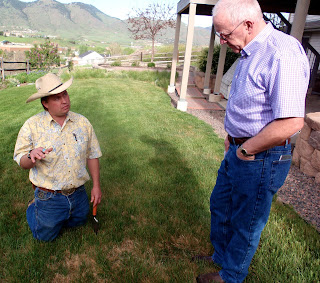Spring is settling in here in the Denver-Metro area. I know that I am encountering a lot of clients that are trying a vegetable garden for the very first time. This can be challenging for us as Master Gardeners because we generally have so much information we can share that the clients eyes will begin to glaze over after about 10 minutes into the conversation. I think some of the first and best advice we can give a newbie-gardener client is reference material!
There is a plethora of gardening books we could suggest. I know my personal library is huge and I am always adding new books that I get a great deal of from Amazon. (As I think about what is currently on my way-too-long “Wish List”) Again, we could list off an intimidating list of gardening for dummies books for the intrepid wanna-be gardener.
Technology to the rescue...
There are several wonderful apps that are great & easy to use reference tools for the new or practiced gardener right on their i-phone, I-pad or android enabled devices. These programs are especially easy to share with the influx of young urban dwellers that are craving that locavore essence to include their own food or gardening resource.











